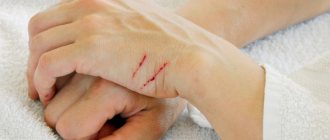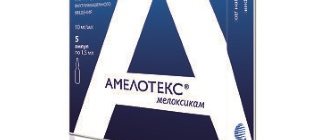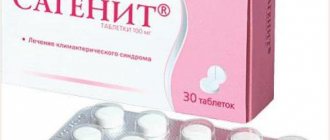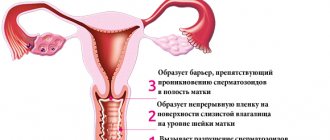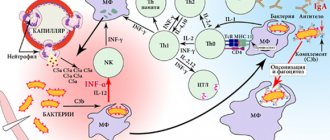Indications for use of Chondroxide ointment
The ointment is an analgesic and antibacterial agent. It actively affects the restoration of connective tissue, and it also has a beneficial effect on reducing the loss of calcium and phosphorus in the bones. But the indications for the use of Chondroxide ointment are limited not only by these actions of the drug. It is effective for various diseases:
- osteochondrosis;
- arthrosis;
- osteoporosis;
- recovery after operations and fractures.
Chondroxide can also be used to prevent all these diseases. It slows down the progression of joint diseases and relieves swelling. Its action lies in the suppressive action of enzymes that have a destructive effect on bone tissue. It is known that in order to ensure the smooth functioning of the joints, they must produce synovial fluid, and Chondroxide ointment helps to increase the level of its performance. In addition, the ointment is an effective remedy for pain arising in the periodontium.
Return to content
Composition of the ointment
Chondroitin sulfate in this drug is the main active substance. In cartilage and connective tissue, it is one of the main elements, it ensures their strength and restores the balance of calcium and phosphorus in the bones. It is found in synovial fluid and is a lubricant. In addition to it, the medicine contains:
- the second active substance is dimethyl sulfoxide;
- petrolatum;
- lanolin anhydrous;
- water for injections.
Return to content
Composition and therapeutic effect
The active component of the ointment is chondroitin sulfate. This is a substance with pronounced chondroprotective properties. The component suppresses the activity of enzymes that lead to the destruction of articular cartilage, improves metabolic processes in the affected area (has a beneficial effect on the metabolism of calcium and phosphorus).
Chondroitin takes part in the construction of cartilage and bone tissue. The product safely relieves pain and inflammation, practically without affecting the internal organs.
In addition to the main active ingredient, Chondroxide gel includes a number of auxiliary components:
- Dimethyl sulfoxide. It is a colorless liquid with a sweetish taste. In the form of aqueous solutions it is used as an anti-inflammatory and analgesic agent, in ointments - as a component that helps transfer medicinal components under the skin directly to the affected area. Easily absorbed into the skin, reaches joints and cartilage tissue within a few seconds;
- Propylene glycol. It is a colorless liquid that is viscous and has a sweetish taste. It has antiseptic (anti-putrefactive) properties. Softens and retains moisture. In medicines it is often used as a preservative;
- Isopropanol This is an alcohol solution that has a pungent and unpleasant odor. Has disinfecting properties;
- Ethanol. Other names are ethyl alcohol, alcohol or simply alcohol. It is a colorless liquid with a pungent odor. It has antiseptic, disinfecting, tanning and drying properties. Often used as a solvent for many medicinal solutions. It is used in compresses as a warming agent (due to its ability to dilate blood vessels);
- Sodium disulfite. This is an inorganic compound presented in the form of yellow crystals. It has antioxidant activity and restorative properties. It is included in medications as a stabilizer;
- Nipagin. This substance is an odorless crystalline powder. Has antiseptic and disinfectant properties. Used in medicines as a preservative;
- Nipazol. It is propyl ether. Outwardly it looks like a fine crystalline powder of white or yellowish color and has a specific odor. Has antiseptic properties. Added to ointments and creams as a preservative;
- Carbopol. It is a derivative of acrylic acid. Under certain conditions, a gel is made from it, which is the basis of ointments and gels.
Instructions for use and dosage
This drug has a fairly long course of use, since the active substance acts in a complex manner and is capable of activating osteochondral processes not immediately. Therefore, in the presence of joint diseases, treatment must be carried out in advance, and these diseases, as is known, are associated with seasonality. Premature use will subsequently help avoid what Chondroxide ointment is used for and become an excellent means of prevention. Apply the ointment to previously cleansed skin in a circular motion until completely absorbed. It is better to consult with your doctor about the duration of the course of treatment, but as a rule, it is 13-20 days. Frequency of use: twice a day.
Return to content
Therapy for heel spurs
For plantar fasciitis, doctors often prescribe the pain-relieving ointment Chondroxide. This drug helps cure the disease, while eliminating pain and stopping the inflammatory process. The composition must be rubbed in several times a day, the duration of the course of treatment is on average a month. Before using the product, it is important to make sure that there is no allergy to the components of the drug. To avoid complications, it is important to carry out a full medical examination before starting treatment. This will help prevent the development of many pathologies.
Contraindications and side effects
Rare, but possible cases of a dermatic allergic reaction and redness after using the drug. If side effects of Chondroxide are detected, you should rinse the area of use with plenty of water and subsequently stop using the ointment. Pregnancy, breastfeeding, and the presence of thrombosis are contraindications to the use of Chondroxide ointment. For young children, the drug can be used as prescribed by a doctor.
For inflammation of muscles and tissues, Viprosal ointment, the main component of which is snake venom, helps well. However, this product may cause an allergic reaction to its constituent components.
If you have a bruise, sprain or fracture, then Ketonal ointment https://wdesire.ru/articles/70_maz-ketonal-ot-chego-pomogajet/ can help you relieve pain symptoms.
Solcoseryl ointment, which is good for healing burns, is described here in detail.
Return to content
Side effects of Chondroxide
According to patient reviews, the ointment, unlike tablets, does not cause pronounced side effects, the use of which may result in vomiting, nausea and diarrhea. If you know what Chondroxide ointment helps with, and do not have an individual intolerance to its main components, it will be a practically safe but effective medicine.
Return to content
Contraindications
The drug is not prescribed to patients if they have an individual intolerance to the active or auxiliary ingredient. Contraindications to Chondroxide Forte also include:
- breastfeeding period;
- the presence of cracks, open wound surfaces, abrasions on the skin in the intended area of application;
- pregnancy.
The drug contains meloxicam from the group of non-steroidal anti-inflammatory drugs. It is able to penetrate the systemic bloodstream and cause side effects. Therefore, patients with gastritis and ulcerative lesions of the gastrointestinal tract are treated with Chondroxide Forte cream under medical supervision.
The drug should be used in low dosages for patients with cardiovascular pathologies, diseases of the liver and genitourinary system. In pediatrics, it is used to treat children over 12 years of age.
special instructions
Children should use the ointment only as prescribed by a doctor. When using blood thinning drugs simultaneously with Chondroxide, you should also consult your doctor.
When applying to the skin, keep the epidermis clean, do not allow it to come into contact with mucous membranes; if this happens, rinse your eyes, nose or mouth with plenty of water. Also, according to the instructions for use of Chondroxide ointment, it is not advisable to use the drug if there is damage to the skin.
Return to content
Drug price
How much does Chondroxide ointment cost? This question can be answered by taking into account the pricing policies of different suppliers and pharmacies selling this medicine. Depending on the packaging (maybe 30 or 50 g), the cost ranges from 320 to 800 rubles. The price also depends on the region in which the ointment is sold.
Return to content
How to use the product correctly?
To achieve a positive effect from treatment with ointment, it is necessary to use the drug correctly. The medical professional must explain to the patient how treatment with Chondroxide should be carried out. The duration of the course of therapy is determined strictly by the attending physician, depending on the severity of the disease and the physiological characteristics of the patient. To obtain the desired therapeutic result, it is important to complete the entire course of treatment, which is 2.5 weeks. In frequent cases, experts recommend using Chondroxide several times a day. It is important to rub the ointment into the skin until the product is completely absorbed.
Cheap analogues of Chondroxide ointment
- Mucosat - slows down the process of destruction of bone tissue, reduces calcium loss and restores cartilage tissue.
- Artrin is an effective drug with anti-inflammatory and analgesic effects. It has a visible effect in the treatment of osteochondrosis and arthrosis.
- Biartrin is a high-quality analogue of Chondroxide ointment, which allows you to regulate metabolism in cartilage tissue.
- Ibuprofen - comes in various forms, but is most often used in capsules. Used in the treatment and prevention of diseases of the joints and spine. It is successfully used as an analgesic for various types of pain, including migraines, neuralgic diseases, recovery period after injuries and operations. The disadvantage of this analogue is that it must be used in combination with drugs based on animal bone components, which generally increases the cost of such therapy.
- Artron Complex - this analogue also contains chondroitin sulfate, and is prescribed for osteoarthritis and tendinopathy. The use of Artron among athletes is widespread, since it is an effective remedy for sports injuries and physical overload. It has restorative properties, so it is used during recovery after operations. It is used in combination with chondroprotectors, which does not make the complex cheaper.
Return to content
Description of the drug
Osteochondrosis and arthrosis are diseases that cannot yet be completely cured. Therefore, the main goals of therapy are to eliminate symptoms and transfer the pathology to a stage of stable remission. The only effective way to influence the pathogenesis of degenerative changes is the use of chondroprotectors.
One of them is Chondroxide. The therapeutic line includes ointment, gel with a delicate consistency and enteric-coated tablets. The clinical effectiveness of all products has been confirmed by numerous studies.
What does Chondroxide ointment help with:
- eliminates morning swelling of joints and stiffness of movement;
- prevents the formation of inflammatory swelling of soft tissues;
- improves the functioning of the ligamentous-tendon apparatus;
- stimulates partial regeneration of hyaline cartilage;
- reduces the severity of pain, crunching, clicking that occurs during movement.
Doctors include the drug in treatment regimens and to reduce the dosages of glucocorticosteroids, muscle relaxants, and NSAIDs. These drugs, when taken for a long time, have hepatotoxic, nephrotoxic and gastrotoxic effects. Thanks to the use of chondroprotectors, the pharmacological load on the body is significantly reduced.
Clinical and pharmacological group
Chondroxide cream is included in the clinical and pharmacological group of chondroprotectors for external use. The drug also belongs to the stimulators of regeneration of cartilage and connective tissue joint structures.
pharmachologic effect
The range of applications of Chondroxide ointment is based on the pharmacological action of its active ingredient - chondroitin. This bioactive substance is produced in the human body and is characterized by affinity for cartilage tissue.
Chondroitin promotes sulfur fixation during the biosynthesis of chondroitinsulfuric acid. A chondroprotector with a wide evidence base of therapeutic effectiveness accelerates metabolic processes. It initiates the restoration of the cartilaginous surfaces lining the bone heads.
Chondroitin sulfate is characterized by diverse positive properties:
- slowing down the resorption of bone tissue due to the deposition of calcium in them;
- improvement of phosphorus-calcium metabolism in hyaline cartilage;
- inhibition of the processes of degeneration of cartilage and connective tissues;
- inhibition of enzymes that destroy joint structures;
- stimulation of glycosaminoglycan biosynthesis;
- acceleration of regeneration of the joint capsule;
- increased production of synovial fluid;
- preventing the formation of blood clots in the microvasculature.
The more chondroitin enters the joint cavities, the more moisture is retained in the thickness of the cartilage. The quality of synovial fluid improves and its shock-absorbing properties increase. After 2-3 weeks of course use of the ointment, it begins to have an anti-inflammatory, analgesic, and decongestant effect. The range of motion increases in both large and small joints.
Release form and composition
The domestic manufacturer produces Chondroxide in aluminum tubes, each of which contains 30 or 50 g of ointment. It is a thick yellowish mass of jelly-like consistency with a pleasant odor. Secondary packaging is a cardboard box with instructions for use included. The active ingredient of the drug is chondroitin sulfate.
The auxiliary composition is represented by the following components:
- dimethyl sulfoxide;
- lanolin;
- Vaseline;
- monoglycerides;
- purified water.
Dimethyl sulfoxide is often listed as an active ingredient because it has anti-inflammatory properties. It prolongs and enhances the effect of chondroitin, ensures its transepidermal absorption into pathological foci.
When choosing whether to prescribe Chondroxide ointment or gel to a patient, vertebrologists and orthopedists take into account many factors. These are the size of the damaged joint, the degree of progression of pathology and destruction of hyaline cartilage.
The gel is better absorbed by the skin and has a faster therapeutic effect. The ointment penetrates the joint cavities more slowly due to the presence of fatty substances in the composition. But this dosage form exhibits clinical activity longer, which makes it possible to reduce the frequency of use.
The therapeutic line of chondroprotector also includes Chondroxide Plus cream. Its second active ingredient is meloxicam, a non-steroidal anti-inflammatory drug. The combined composition explains not only the powerful analgesic effect, but also a fairly wide list of contraindications.
Storage conditions and periods
The shelf life of the drug is 36 months. After opening the aluminum tube, it is limited to 3-4 weeks. Chondroxide should be stored in a dark place at a temperature of 2 to 20°C. If the temperature regime is violated, the ointment will change its physicochemical properties and become unsuitable for treatment.
What is better Chondroxide ointment or gel?
The main difference between these two forms of drug release is the consistency, which affects the degree of absorption of the drug. For sports purposes and for massage, it is better to use ointment. Otherwise, no significant differences are observed. Both the gel and the ointment have the same recommendations for use and contraindications. The active substances are also identical, the only difference is in the auxiliary ones, but their list is selected in accordance with ensuring a gel-like or creamy structure of the drug.
Return to content
Chondroxide ointment for external application 5% tube 30g No. 1 43390
Description
The ointment is light yellow in color, with the smell of dimethyl sulfoxide. The gel is yellowish, translucent, with a fruity odor. Chondroxide® gel is well absorbed. According to data obtained from experimental studies in mice using radiolabeled 3H-chondroitin sulfate, the absorption rate of chondroitin sulfate is 14%. Dimethyl sulfoxide promotes better penetration of chondroitin sulfate through cell membranes deep into tissues. After applying the drug Chondroxide® gel to the skin, chondroitin sulfate quickly and selectively enters the joint, reaching Cmax after 30 minutes and subsequent two-phase removal of the drug from the cartilage tissue. Completion of the rapid elimination phase occurs 1 hour after application. The retention time of the drug in the joint is 5 hours. Chondroxide® has a combined effect: - slows down the progression of osteoarthritis and osteochondrosis; - has an analgesic effect; - has an anti-inflammatory effect; - stimulates the restoration of articular cartilage; - improves joint mobility; - reduces swelling of joints. Thanks to the optimal combination of gel components, there is a mutual enhancement of their analgesic and anti-inflammatory effects. The use of the drug Chondroxide® allows you to reduce the dose of NSAIDs taken. Chondroxide® ointment and gel contain a natural component - chondroitin sulfate (high molecular weight mucopolysaccharide), which takes part in the construction of cartilage tissue. Chondroitin sulfate: - improves phosphorus-calcium metabolism in cartilage tissue; - reduces the activity of enzymes that destroy cartilage tissue; — inhibits the processes of degeneration (destruction) of cartilage tissue; — stimulates the synthesis of glycosaminoglycans; - prevents the collapse of connective tissue. This leads to a decrease in pain and increased mobility of the affected joints. Avoid contact of the ointment and gel with mucous membranes and open wounds. If it gets on skin or clothing, the gel is easily washed off with water, leaving no traces. Do not use ointment and gel without consulting a doctor in childhood. Chondroxide® ointment and gel do not cause sedation, psychomotor impairment and do not affect the patient’s ability to engage in potentially hazardous activities that require increased attention and speed of mental and motor reactions.
Compound
Chondroxide® ointment Ointment for external use 100 g chondroitin sulfate 5 g excipients: dimethyl sulfoxide (dimexide); petrolatum; lanolin anhydrous; distilled monoglycerides; purified water in aluminum tubes of 30 or 50 g; in a cardboard pack 1 tube. Chondroxide® gel Gel for external use 1 g chondroitin sodium sulfate (in terms of 100% dry matter) 0.05 g excipients: dimethyl sulfoxide (dimexide) - 0.1 g; propylene glycol (1,2-propanediol) - 0.05 g; isopropanol (isopropyl alcohol, 2-propanol) - 0.05 g; ethanol (ethyl alcohol) - 0.2 g; sodium disulfite (sodium metabisulfite) - 0.0005 g; methyl parahydroxybenzoate (nipagin, methylparaben) - 0.0012 g; propyl parahydroxybenzoate (nipazole, propylparaben) - 0.0003 g; carbomer (carbopol) - 0.035 g; orange flavor (food flavor "Orange") - 0.005 g; water (purified water) - up to 1 g in aluminum tubes of 20, 25, 30, 35 or 40 g; in a cardboard pack 1 tube.
Application
Degenerative-dystrophic diseases of the joints and spine, incl. osteoarthritis and osteochondrosis of the spine (treatment and prevention). You cannot use ointment and gel without consulting a doctor during pregnancy and breastfeeding. Allergic reactions. Cases of interaction or incompatibility with other drugs are unknown. Chondroxide® ointment Ointment for external use Externally. Apply to the skin (at the affected area) and rub lightly for 2-3 minutes (until completely absorbed) 2-3 times a day. The course of treatment is 2–3 weeks. If necessary, the course of treatment is repeated. Chondroxide® gel Externally. Apply to the skin (at the affected area) and rub in lightly with patting movements for 2-3 minutes (until completely absorbed) 2-3 times a day. The course of treatment is from 2–3 weeks to 2–3 months. If necessary, the course of treatment is repeated. No cases of overdose have been reported. For both dosage forms: hypersensitivity to the components of the drug; damage to the skin in the area where the drug is applied. With caution: pregnancy, lactation, childhood (efficacy and safety have not been established).
Possible product names
- Chondroxide ointment 5% tube 30g N1
- CHONDROXIDE 5% OINTMENT 30.0
- (Chondroxide) Chondroxide ointment 5% tube 30g N1
Reviews
Polina, 28 years old : Recently my knees suddenly started hurting. I immediately resorted to drug treatment, but it did not bring any results. I decided to try Chondroxide. After using it daily, the pain went away and I began to feel better on the 10th day.
Nadezhda, 34 years old : I have been suffering from osteochondrosis for a long time. What have I tried? I have been using Chondroxide for quite a long time - for six months, during which time the characteristic crunch in the vertebrae and pain in the joints disappeared, and whether the cartilage will be restored or not will become clear after longer use.
Svetlana, 42 years old : I found out that Chondroxide has an excellent analgesic effect. After the joints in my legs started to hurt, I decided to use this drug daily. It turned out that it was not in vain that they recommended it to me - the pain really went away after two weeks of use.

